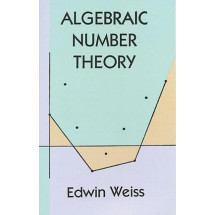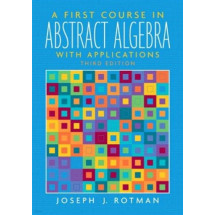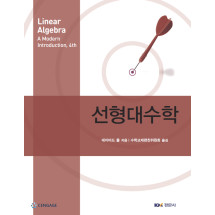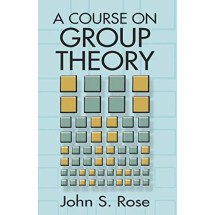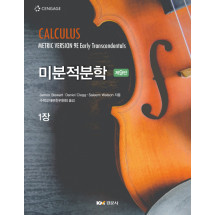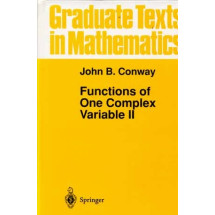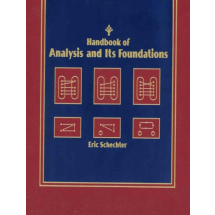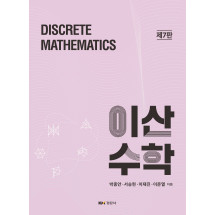Section I. Complex Numbers and their Geometric Representation
Chapter I. Foundations
1. Introduction
2. The system of real numbers
3. Pointgs and vectors of the plane
Chapter II. The System of Complex Numbers and the Gaussian Plane of Numbers
4. Historical remarks
5. Introduction of complex numbers. Notation
6. Equality and inequality
7. Addition and subtraction
8. Multiplication and division
9. Derived rules. Powers
10. The system of complex numbers as an extension of the system of real numbers
11. Trigonometric representation of complex numbers
12. Geometric representation of multiplication and division
13. Inequalities and absolute values. Examples
Chapter III. The Riemann Sphere of Numbers
14. The stereographic projection
15. The Riemann sphere of numbers. The point infinity. Examples
Section II. Linear Functions and Circular Transformations
Chapter IV. Mapping by Means of Linear Functions
16. Mapping by means of entire linear functions
17. Mapping by means of the function w = 1/z
18. Mapping by means of arbitrary linear functions
Chapter V. Normal Forms and Particular Linear Mappings
19. The group-property of linear transformations
20. Fixed points and normal forms
21. Particular linear mappings. Cross ratios
22. Further examples
Section III. Sets and Sequences. Power Series
Chapter VI. Point Sets and Sets of Numbers
23. Point sets
24. Sets of real numbers
25. The Bolzano-Weierstrass theorem
Chapter VII. Sequences of Numbers. Infinite Series
26. Sequences of complex numbers
27. Sequences of real numbers
28. Infinite series
Chapter VIII. Power Series
29. The circle of convergence
30. Operations on power series
Section IV. Analytic Functions and Conformal Mapping
Chapter IX. Functions of a Complex Variable
31. The concept of a function of a complex variable
32. Limits of functions
33. Continuity
34. Differentiability
35. Properties of functions represented by power series
Chapter X. Analytic Functions and Conformal Mapping
36. Analytic functions
37. Conformal mapping
Section V. The Elementary Functions
Chapter XI. Power and Root. The Rational Functions
38. Power and root
39. The entire rational functions
40. The fractional rational functions
Chapter XII. The Exponential, Trigonometric, and Hyperbolic Functions
41. The exponential function
42. The functions cos z and sin z
43. The functions tan z and cot z
44. The hyperbolic functions
Chapter XIII. The Logarithm, the Cyclometric Functions, and the Binomial Series
45. The logarithm
46. The cyclometric functions
47. The binomial series and the general power
Bibliography; Index
Volume 2 and 3 (Theory of Functions, Parts I and II) Table of Contents:
------------------------------------------------------------
PART I: ELEMENTS OF THE GENERAL THEORY OF ANALYTIC FUNCTIONS
Section I. Fundamental Concepts
Chapter 1. Numbers and Points
1. Prerequisites
2. The Plane and Sphere of Complex Numbers
3. Point Sets and Sets of Numbers
4. Paths, Regions, Continua
Chapter 2. Functions of a Complex Variable
5. The Concept of a Most General (Single-valued) Function of a Complex Variable
6. Continuity and Differentiability
7. The Cauchy-Riemann Differential Equations
Section II. Integral Theorems
Chapter 3. The Integral of a Continuous Function
8. Definition of the Definite Integral
9. Existence Theorem for the Definite Integral
10. Evaluation of Definite Integrals
11. Elementary Integral Theorems
Chapter 4. Cauchy's Integral Theorem
12. Formulation of the Theorem
13. Proof of the Fundamental Theorem
14. Simple Consequences and Extensions
Chapter 5. Cauchy's Integral Formulas
15. The Fundamental Formula
16. Integral Formulas for the Derivatives
Section III. Series and the Expansion of Analytic Functions in Series
Chapter 6. Series with Variable Terms
17. Domain of Convergence
18. Uniform Convergence
19. Uniformly Convergent Series of Analytic Functions
Chapter 7. The Expansion of Analytic Functions in Power Series
20. Expansion and Identity Theorems for Power Series
21. The Identity Theorem for Analytic Functions
Chapter 8. Analytic Continuation and Complete Definition of Analytic Functions
22. The Principle of Analytic Continuation
23. The Elementary Functions
24. Continuation by Means of Power Series and Complete Definition of Analytic Functions
25. The Monodromy Theorem
26. Examples of Multiple-valued Functions
Chapter 9. Entire Transcendental Functions
27. Definitions
28. Behavior for Large z
Section IV. Singularities
Chapter 10. The Laurent Expansion
29. The Expansion
30. Remarks and Examples
Chapter 11. The Various types of Singularities
31. Essential and Non-essential Singularities or Poles
32. Behavior of Analytic Functions at Infinity
33. The Residue Theorem
34. Inverses of Analytic Functions
35. Rational Functions
Bibliography; Index
PART II: APPLICATIONS AND CONTINUATION OF THE GENERAL THEORY
Introduction
Section I. Single-valued Functions
Chapter 1. Entire Functions
1. Weierstrass's Factor-theorem
2. Proof of Weierstrass's Factor-theorem
3. Examples of Weierstrass's Factor-theorem
Chapter 2. Meromorphic Func
4. Mittag-Leffler's Theorem
5. Proof of Mittag-Leffler's Theorem
6. Examples of Mittag-Leffler's Theorem
Chapter 3. Periodic Functions
7. The Periods of Analytic Functions
8. Simply Periodic Functions
9. Doubly Periodic Functions; in Particular, Elliptic Functions
Section II. Multiple-valued Functions
Chapter 4. Root and Logarithm
10. Prefatory Remarks Concerning Multiple-valued Functions and Riemann Surfaces
11. The Riemann Surfaces for p(root)z and log z
12. The Riemann Surfaces for the Functions w = root(z - a1)(z - a2) . . . (z - ak)
Chapter 5. Algebraic Functions
13. Statement of the Problem
14. The Analytic Character of the Roots in the Small
15. The Algebraic Function
Chapter 6. The Analytic Configuration
16. The Monogenic Analytic Function
17. The Riemann Surface
18. The Analytic Configuration
Bibliography, Index
Volume 4 and 5 (Problem Book in the Theory of Functions, Two Volumes Bound As One) Table of Contents:
------------------------------------------------------------
Volume I: Problems in the Elementary Theory of Functions
Chapter I. Fundamental Concepts
1. Numbers and Points. Problems; Answers
2. Point Sets. Paths. Regions
Chapter II. Infinite Sequences and Series
3. Limits of Sequences. Infinite Series with Constant Terms. Problems; Answers
4. Convergence Properties of Power Series. Problems; Answers
Chapter III. Functions of a Complex Variable
5. Limits of Functions. Continuity and Differentiability. Problems; Answers
6. Simple Properties of the Elementary Functions. Problems; Answers
Chapter IV. Integral Theorems
7. Integration in the Complex Domain. Problems; Answers
8. Cauchy's Integral Theorems and Integral Formulas. Problems; Answers
Chapter V. Expansion in Series
9. Series with Variable Terms. Uniform Convergence. Problems; Answers
10. Expansion in Power Series. Problems; Answers
11. Behaviour of Power Series on the Circle of Convergence. Problems; Answers
Chapter V. Conformal Mapping
12. Linear Functions. Stereographic Projection. Problems; Answers
13. Simple Non-Linear Mapping Problems. Problems; Answers
Volume II: Problems in the Advanced Theory of Functions
Foreword
Chapter I. Additional Problems for I, Chs. 1-5
1. Fundamental Concepts
2. Infinite Sequences and Series
3. Functions of a Complex Variable
4. Integral Theorems
5. Expansions in Series
Chapter II. Singularities
6. The Laurent Expansion
7. The Various Types of Singularities
8. The Residue Theorem, Zeros, and Poles
Chapter III. Entire and Meromorphic Functions
9. Infinite Products. Weierstrass's Factor-theorem
10. Entire Functions
11. Partial-fractions Series. Mittag-Leffler's Theorem
12. Meromorphic Functions
Chapter IV. Periodic Function
13. Simply Periodic Functions
14. Doubly Periodic Functions
Chapter V. Analytic Continuation
15. Behavior of Power Series on the Boundary of the Circle of Convergence
16. Analytic Combination of Power Series
17. Analytic Continuation of Arbitrarily Given Functions
Chapter VI. Multiple-valued Functions and Riemann Surfaces
18. Multiple-valued Functions in General
19. Multiple-valued Functions; in Particular, Algebraic Functions
Chapter VII. Conformal Mapping
20. Concept and General Theory
21. Specific Mapping Problems



